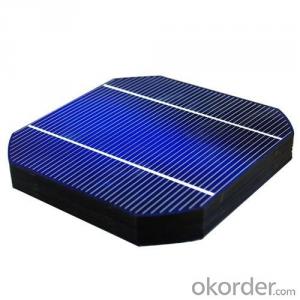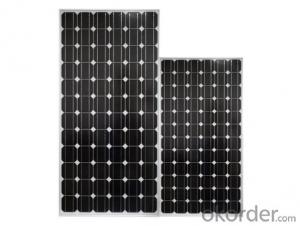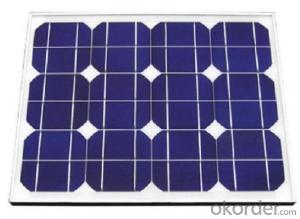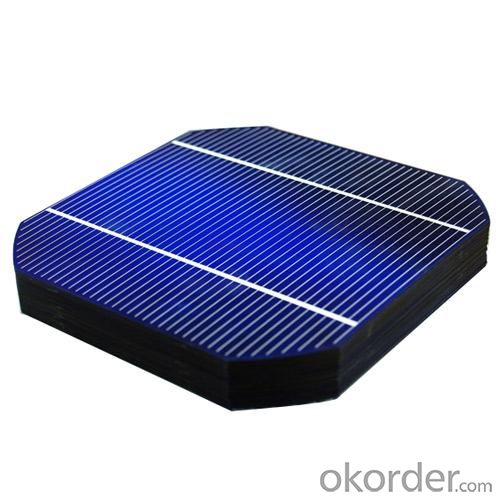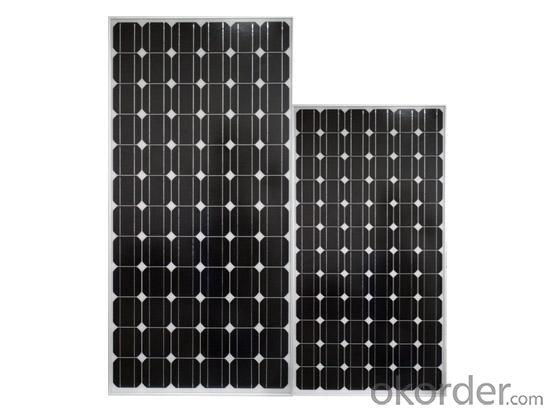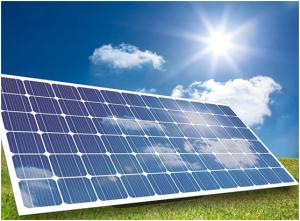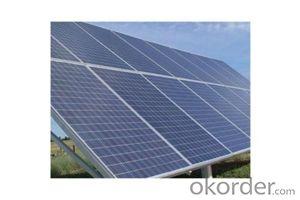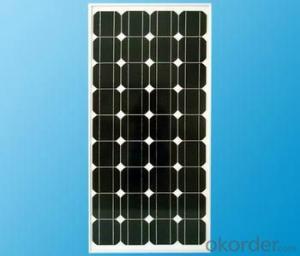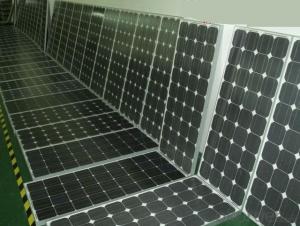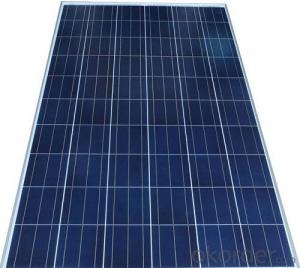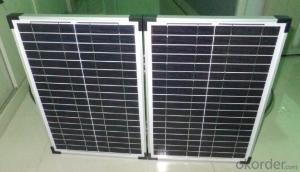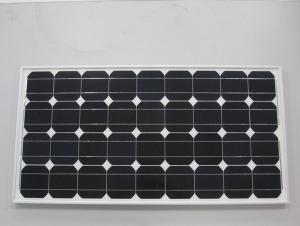High Quality 40W 18V Mono Solar Panel - Hot Sales
- Loading Port:
- China main port
- Payment Terms:
- TT OR LC
- Min Order Qty:
- 500 watt
- Supply Capability:
- 100000 watt/month
OKorder Service Pledge
OKorder Financial Service
You Might Also Like
Structure
20W18V Mono Solar Panel,High Quality,Hot Sales
We are focus on 1w -100W solar modules with high quality and best price.
Mechanical Characteristics
Frame (Material, Comers, etc.) | Anodized Aluminium | ||
Front side | Glass | ||
Front glass thickness | 3.2mm | ||
Encapsulate | EVA | ||
Back side | TPT | ||
Junction box | IP65 | ||
MOQ: No.
Dlivery time: 5 days after deposit for small number, for large number, we will check and give exact reply Payment: 100% TT for small quantity; legal way is 30% deposit + 70% balance before shipment
Model:PS-20M-18V
size: 480*357*25mm or as required
Feature
Pure Sine Wave Output;
High performance Maximum Power Point Tracking(MPPT);
Power Automatically Locked(APL);
Reverse power transmission;
High-Frequency High Conversion Rate;
Anti-Islanding Protect;
Input /output is fully isolated to protect the electrical safety;
Multiple parallel stacking;
The Leading Patent Technology;
IP65 WaterProof;
Flexible Installation;
Simplify maintenance (user serviceable)
High Efficiency & Best Cost-Effectiveness
Image
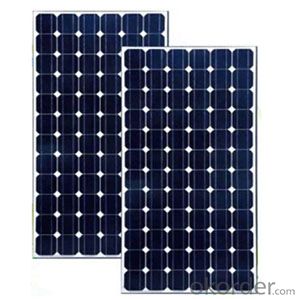
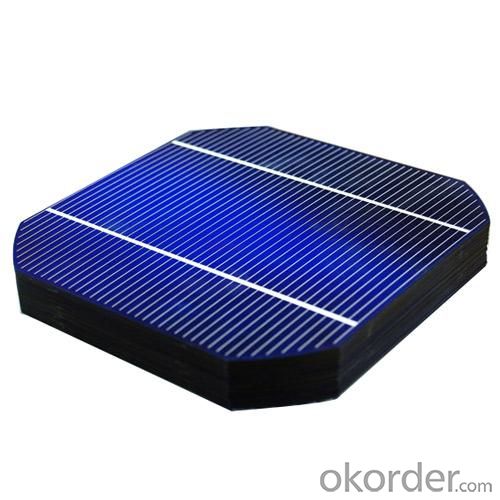
Specification
Model | PS-20M -18V |
Crystalline type | monocrystalline |
Maximum power (Wp) | 20 |
Maximum power voltage (V) | 17.2 |
Maximum power current (A) | 1.18 |
Open circuit voltage (V) | 21.4 |
Short circuit current (A) | 1.30 |
Number of cells (Pcs) | 36 |
Size of module (mm) | 475*350*25mm or as required |
Maximum system voltage (V) | 715 |
Temperature Range | -40~+85 C |
Surface Maximum Load Capacity | 60m/s(200kg/sq.m) |
Allowable Hail Load | steel ball fall down from 1m height |
Weight per piece (kg) | 1.8 |
Length of Cables (mm) | 300 |
Cell Efficiency (%) | >17.6% |
Module Efficiency (%) | >12% |
Output tolerance (%) | +/-5% |
Frame (Material, Corners, etc.) | Aluminum |
Standard Test Conditions | AM1.5 1000W/m2 25 |
FF (%) | 72% |
Warranty | 2 years product warranty and 25 years 80% of power |
FAQ
Can we visit your factory?
Surely, I will arrange the trip basing on your business schedule.
Can you do OEM for us?
Yes, we can.
How do you pack your products?
We have rich experience on how to pack the panels to make sure the safety on shipment when it arrives at the destination.
Can you help us install the module if we cooperate with you?
We haven’t entered into installation sector, but we have the plan in near future.
- Q: Solar panels which is the one produces the power...I wanna the complete description about it...
- What they consist of is little bitty silicon particles that transport the electricity through thermal conduction. The sun's rays activate it and create a circuit. The advantage of solar energy is that it's clean and renewable. At this point in time, though, it's inefficient because you only get about 0 to 5 percent output. Also, we don't have the technology right now to save solar energy and store it into batteries so it can be used at night.
- Q: I'm thinking of these solar panels that people have on their rooftops in domestic properties. I suppose I mean after how long do you break even with respect to just carrying on without them and getting you electricity from the utilities companies? Or answer in any way you think is pertinent. The more info the better.
- Hi Warne, Payback period of solar panels depends on three main factors: ) Amount of solar radiation available: the more solar resource available at a site, the shorter the payback period will be. The insolation level is a function of latitude, cloudiness, elevation and some other factors. 2) Availability of grants, incentives and tax credits. Reducing the initial cash outlay is a great way to speed up profitability. For example, in the US, the 30% federal tax credit greatly reduces the payback period as it puts some of the cash back in your pocket in a short amount of time. Minimizing the initial cost has a big impact, since money in your pocket today is always worth more than money down the road. 3) Net metering or feed-in-tariff. If you are able to sell back your excess power, or all of the solar electricity to the grid, then you can also improve the payback period. Feed-in-tariffs are not very common in North America, but net metering is an option. Investing in energy efficiency measures (e.g., LED lights) at the same time as solar may help generate more excess power and help with the bottom line. There are some online calculators which may help you put all these together for a specific site. I'm including a link below.
- Q: Can solar panels be used in commercial buildings?
- Yes, solar panels can definitely be used in commercial buildings. In fact, many businesses are increasingly installing solar panels on their rooftops or in open spaces adjacent to their premises. Solar panels are a sustainable and cost-effective solution for generating renewable energy, reducing electricity bills, and lowering carbon footprints in commercial settings.
- Q: I recently got into solar panels, I have little background in electronics but I have done a little electrical work in the past and just want to make a small 36 cell panel to power a 2v battery that would run my a small tv (9 inch) and PS3 for a few hours every night. I have been looking up on how to do it before I get in over my head and I have a few questions.... After you solder all of the cells together then what? Do you hook all of the rows of cells together somehow? Can you connect them straight to a battery? After you hook to the battery do you hook up a power inverter to get the 2 AC plugs that would be needed? Thanks in advance for any help....
- I'll add a few comments to Teelo's It may not be good to connect the assembled solar cells directly to the battery. When there is no sun I think it will drain the battery. I'm pretty sure all circuits I have seen have a reverse polarity diode in series. (unless Teelo knows for sure). Hmmm Reminds me that I have some bare solar cell elements from when Motorola was making them. I used some to power a small radio controlled car. I do know that all good applications have a regulator to make sure the charging is done properly
- Q: Can solar panels be installed on airports?
- Yes, solar panels can be installed on airports. In fact, many airports around the world have already adopted solar energy systems to power their operations and reduce their carbon footprint. Solar panels can be installed on the roofs of airport buildings, canopies in parking lots, or even on open land surrounding the airport. They provide a sustainable source of clean energy and contribute to the overall sustainability efforts of the aviation industry.
- Q: Photo-Voltaic solar panels are very expensive. Most of a home's energy needs are for heating water, heating and air-conditioning. All of these can be met with thermal solar collectors which are much less expensive. The thermal solar panels would heat water stored in a hot water tank which then can be used as hot water, to heat the home, or as the heat source to a Lithium Bromide Absorption chiller to air-condition a home. With the base line needs met without expensive panels and without inefficient energy conversions, only a small Photo-Voltaic array would be needed for the remaining power needs and since those needs are variable, there would still be power to sell to the grid.
- Just read some of the other posts and I am surprised at the answers. Solar thermal systems typically have a payback of less than seven years on residential system without the tax break. A complete system can be installed for about 5k or less. Compare that to 20k or more for PV with a fifteen to twenty year pay off. Each home and area is different so a site evaluation must be done for exact figures and pay offs. I am going off my own experience in my above statements Flat panel collectors work well in most areas for DHW. Evacuated tubes often run too hot which works well for some applications or high usage. Heating water is the single greatest energy usage other than space heating and cooling. It often surpasses the two above systems based on its widespread usage(every houshold in USA has one) and its the amount it is used(24/7@365) The amount of energy spent to heat water is by order of magnitude the greatest number out there. Having a solar thermal system providing hot water for a average American household is equivalent to taking 40,000 miles off the freeway in a car every year. The BTU's required to heat the water is huge. So why is this more developed cheaper and more efficient technology behind PV in awareness? Natural Gas the number one choice for heating water is cheap. It's by product is invisible and misunderstood. What I find fascinating is if you look at the increase in Natural Gas vs Electricity you will be surprised by how much it has jumped in the last seven years. It is not talked about nearly as much as electricity It does not get the same level of press that PV does. So in short the answer is cheap Natural Gas prices and public perception of this product have kept it off the list of many that are turning toward the green trend. It is less sexy than watching your meter spin backwards. It is the best improvement at the best cost except for conservation which is and was the most cost effective energy saving that can be employed
- Q: What is the maintenance cost of solar panels?
- The maintenance cost of solar panels is generally low. Routine maintenance such as cleaning the panels and checking for any damage or debris is recommended, which can be done by the owner or a professional. Additionally, occasional inspections and repairs may be required, but these costs are minimal compared to the long-term benefits of using solar energy.
- Q: How do solar panels affect the environment?
- Solar panels have a positive impact on the environment as they generate clean energy from the sun, reducing the reliance on fossil fuels and significantly lowering greenhouse gas emissions. Additionally, solar panels do not produce air or water pollution during operation, and their use helps conserve water resources. However, the manufacturing process and disposal of solar panels do have some environmental impacts, such as the use of certain chemicals and materials. Overall, the benefits of solar panels far outweigh their minimal negative effects.
- Q: Can solar panels be installed on tall buildings?
- Yes, solar panels can indeed be installed on tall buildings. In fact, tall buildings can provide advantageous conditions for solar panel installations due to their elevated position, which allows for maximum exposure to sunlight throughout the day. Additionally, tall buildings often have large surface areas available for solar panel placement, which can help generate a significant amount of renewable energy.
- Q: That one costs money but looks like it might work. I don't really have the money for it but if it works then it would probably be worth it. Do homemade solar panels really work or is it just a gimmick? I'm really interested to see if anyone has actually tried this and to see what they say about it.Thanks
- Solar photovoltaic cells oxidize, commercial panels are hermetically sealed but DIY panels degrade rapidly with time. Sizing the broken solar cells by individual measurements are labor intensive and the additional soldering makes them unreliable. Also, their irregular shapes result in less of the panel's surface area being covered with cells. They do work but not well and they deteriorate quickly.
Send your message to us
High Quality 40W 18V Mono Solar Panel - Hot Sales
- Loading Port:
- China main port
- Payment Terms:
- TT OR LC
- Min Order Qty:
- 500 watt
- Supply Capability:
- 100000 watt/month
OKorder Service Pledge
OKorder Financial Service
Similar products
Hot products
Hot Searches
